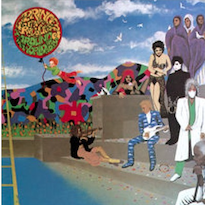In this series of articles, I will discuss the steps involved to create an outdoor cycling program. My advice is largely based on my experience and the population I work with. Although your circumstances and demographic may be different, I hope you will be inspired to extend your indoor classes by creating an outdoor cycling program of your own.
Over the last six years I have become passionate about extending my indoor cycling instruction to include outdoor group rides. As a result, taking my class out of the studio and onto the road has had a profound and pervasive effect on both my students and me. The advantages have more than outweighed the hard work and occasional “What am I doing?” moments.
Why Bring Your Class Outdoors?
In my opinion there are many reasons to add an outdoor component to your indoor classes. These include:
- Riding outdoors together will provide many great ideas for profiles and drills you can use indoors.
- You can teach and reinforce the principles of good technique and training where it counts.
- You will gain additional insights into your students’ physical and emotional needs.
- You will discover new friends and develop an appreciation for the more difficult personalities.
Overall, your students will have more confidence in you and the information you present because you helped them succeed on a real bike with real challenges. This success and excitement will result in better attendance and engagement in your indoor classes.
The effects of an outdoor program on your class will be obvious and positive. Almost every one of my students that participated is now a committed recreational cyclist. Some now regularly commute by bike and even take cycling vacations. However, most rewarding is watching them accomplish goals they never thought were possible. Here are a few reactions six months after our first major outdoor trip as a group:
“This was the first time that I set a long-term goal for myself, using a step-by-step program. It is a powerful tool that I want to continue using in other parts of my life.”
“I gained even more insight about myself. Whether I saw others really struggling or enjoying the ride of their life, I began to realize that their mental outlook was as important, if not more so, than any given level of fitness and physical competence.”
“Giving up the perception of control and trusting the training was valuable.”
The effects extend beyond the individuals with whom I work. Friends and family members became inspired to check out the attraction of cycling. As a result, my local community has increased its awareness of the benefits of cycling and issues related to active transportation.
While all of these reasons may seem compelling, it is also important to think through what it means to commit to an outside program.
If you are an active cyclist, time spent training with your indoor class may not be a substitute for what you might do alone or with your friends. It is important to consider how adding one or more group rides to your schedule will impact your own training and riding.
Once you make the commitment to an outdoor program you need to stick with it. Unlike your regular indoor cycling classes, it will be difficult to miss a week or even find someone to sub for you. You are taking your students on a journey, literally and figuratively. Plan to stay with your new learners as they build their skills. Abandoning them partway through will have a negative impact on your program, your indoor classes, and you as an instructor.
Who Are You Going to Focus On?
From the outset I made a decision to work with novice and relatively inexperienced riders. I reasoned that they are often poorly served by the existing cycling community, and I knew that I would see the greatest impact for my investment of time and energy.
My outdoor program initially attracted women almost exclusively. I have a hypothesis that women generally feel less comfortable on bikes because as children, boys play on their bikes while girls just ride them. Many young girls never really learn how to trust their bikes beyond getting from one place to another within their neighborhood. As they become adults, they become increasingly cautious of venturing farther on their bike; that caution can turn to fear. My goal is to create a systematic introduction to cycling, which will erase all but the appropriate fear.
Our initial focus on basic skills and short distances at the beginning of the program seemed to exclude those who already cycle outside. But partway through each year, as our routes become more challenging, the more experienced riders ask to join us. At that point I am happy to have them because they can ride with the stronger novices while I concentrate on the weaker members of the group. The experienced riders often become informal leaders and coaches.
If you are interested in creating a program to bring your students outside, decide which population you want to work with, understand the commitment you are making, and get excited about the impact you can have on their riding and lives.
In the next two articles I will cover the practical aspects of initiating and managing an indoor-to-outdoor cycling program.
Be sure to check out part 2.

